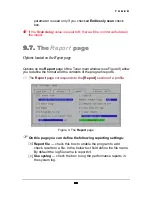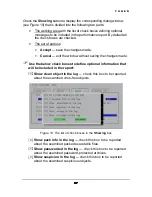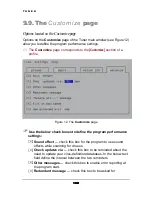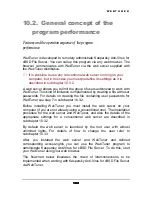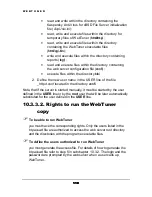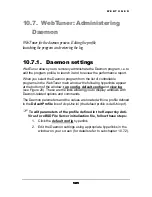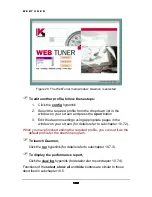
W E B T U N E R
107
107
107
107
•
CH_ROOT
—
Yes
in this line enables the program to
perform the function
chroot()
when the server is started.
No
disables the feature.
•
DOCROOT
—path to the web server root directory. For
example,
DOCROOT=/usr/local/share/AVP/httpd/html
#"
Make sure that the
LOG_FILE
and the
DOCROOT
parameters are
correct. Edit the
USER
and
USE_SSL
only if you are sure.
3. Verify and edit, if not correct, the following strings of the file
loader.cfg
located in the subdirectory
html/settings/
:
•
CgiDir
– path to the
cgi-bin
directory. For example,
CgiDir=/usr/local/share/AVP/httpd/html/cgi-bin
•
AvpDir
– path to the directory containing Kaspersky Anti-
Virus for xBSD File Server files. For example,
AvpDir=/usr/local/share/AVP/
•
AvpIni=AvpUnix.ini
– the name of the Kaspersky Anti-
Virus for xBSD File Server initialization file.
4. Use
the
htpasswd
program supplied with the distributive to
generate the
.htpasswd
file. This file will prevent your web
server from the unauthorized access and must be copied to
the web server root directory (defined by the
DOCROOT
parameter in the file
_httpd.conf
) and to the
CgiDir
directory of
executable files for the daemon process.
The file is generated by using the following string:
htpasswd [-c] filename username
,
where:
•
filename
is a name of the
.htpasswd
file;
•
username
is the user password for the web server
;
•
[-c]
is the optional switch enabling creation of the new
access file. If the switch is missing, the new file will not
be created and the data will be appended to the existing
access file.
5. Generate the new certificate file (
cert.pem
) and the new
encoding key file (
key.pem
) for SSL instead of those supplied



